


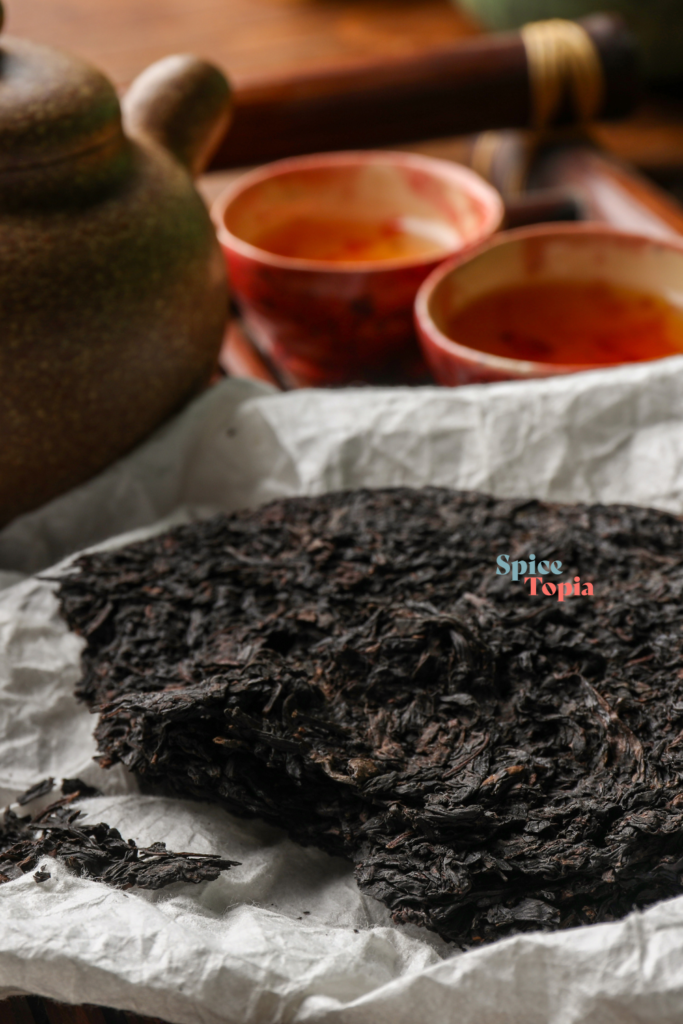
Pu-erh seems to be the most well known fermented tea.
And yet, fermented teas seem to be the least understood tea category in the west. Grown primarily in China, fermented teas include a wide variety of funky teas that differ in the tea leaves used and in the steps of processing, but all are intentionally fermented.
To make things really confusing, what we call black tea in the western world is called red tea in China. Black tea (or dark tea) in China is actually a fermented tea. Called ‘hei cha’, there are many different regional varieties of fermented teas.
Pu-erh tea is one of those fermented teas from the Yunnan Province in China. To be considered a Pu-erh, the tea leaves must be grown and produced in the Yunnan Province in China, come from the Dayeh strain of camellia sinensis, and be dried in the sun.
Pu-erh is also known as pu’er tea, pu’erh, and puerh.
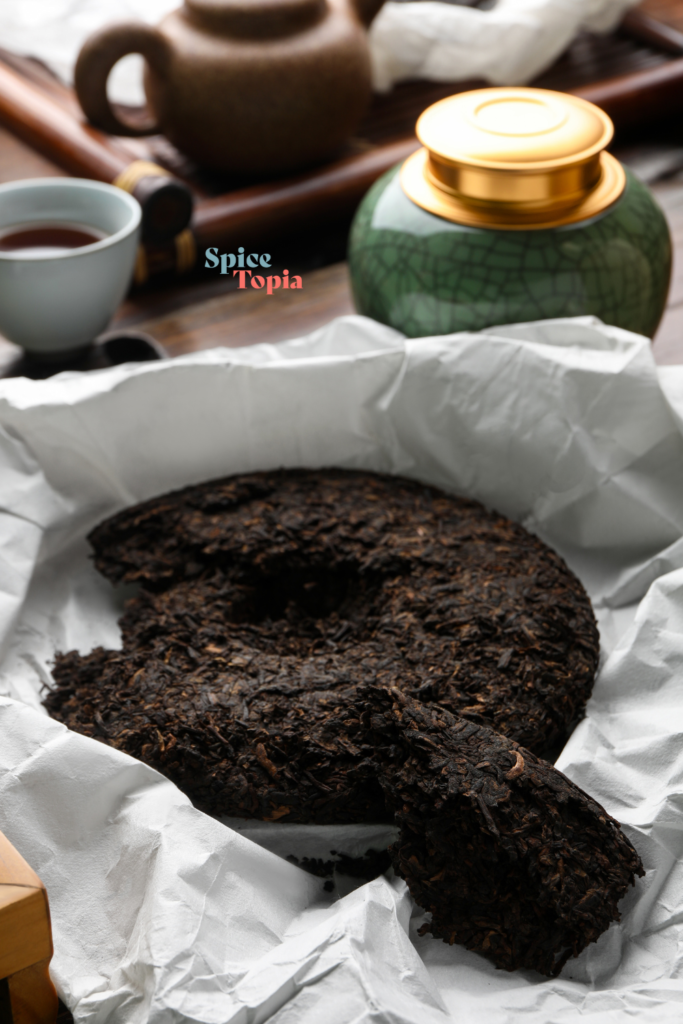
Most teas deteriorate with age. The fresher the tea the better.
Pu-erh is different. Instead, it is aged and refined similarly to wine. In a fermentation process, microbes are introduced (either naturally or artificially) to the tea leaves which causes the leaves to darken and the flavor to change. The tea is then allowed to age– anywhere from a few months to years.
The goal of the fermentation process is to produce a smooth tea with complex notes and a bit of funk.
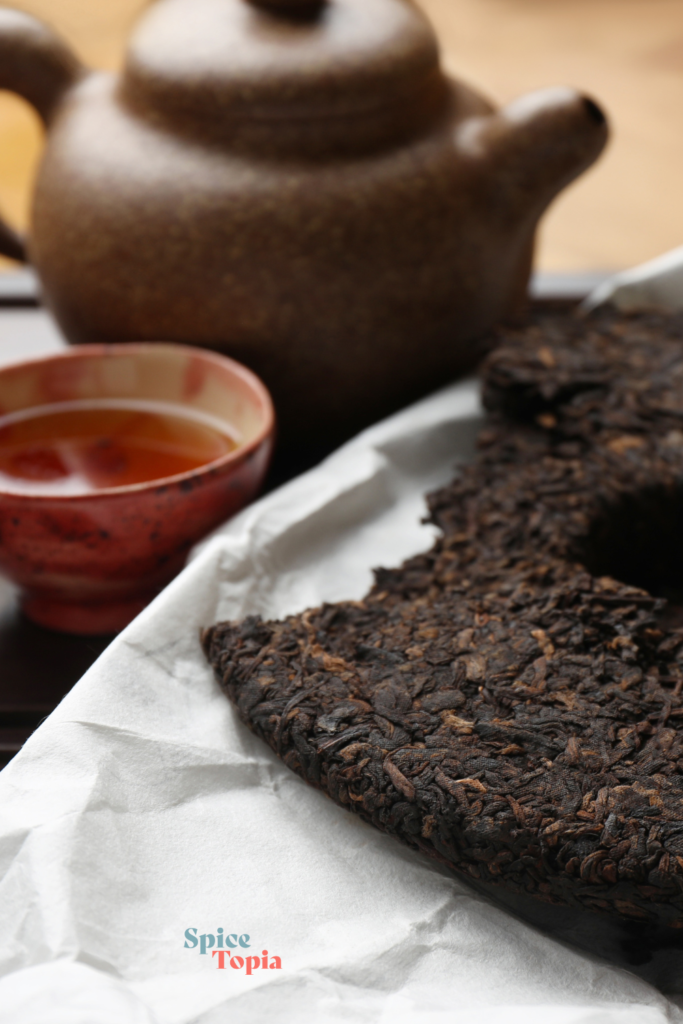
Much like oolong teas, Pu-erh farmers have their “secret recipes” which produce teas that tend towards certain flavors and notes. But like wine producers, the control of those flavors is limited!
The conditions of the fermentation will determine the stages the tea goes through and its flavor in each stage. Pu-erh usually has a funky note, but also has notes as varied as sweet, floral, grassy, earthy, woody, or nutty.
Just like with wine, the best way to decide if you like the taste of Pu-erh is to try it. And not just one variety! Try several different types and varieties of pu-erhs to find one that pleases your palette.
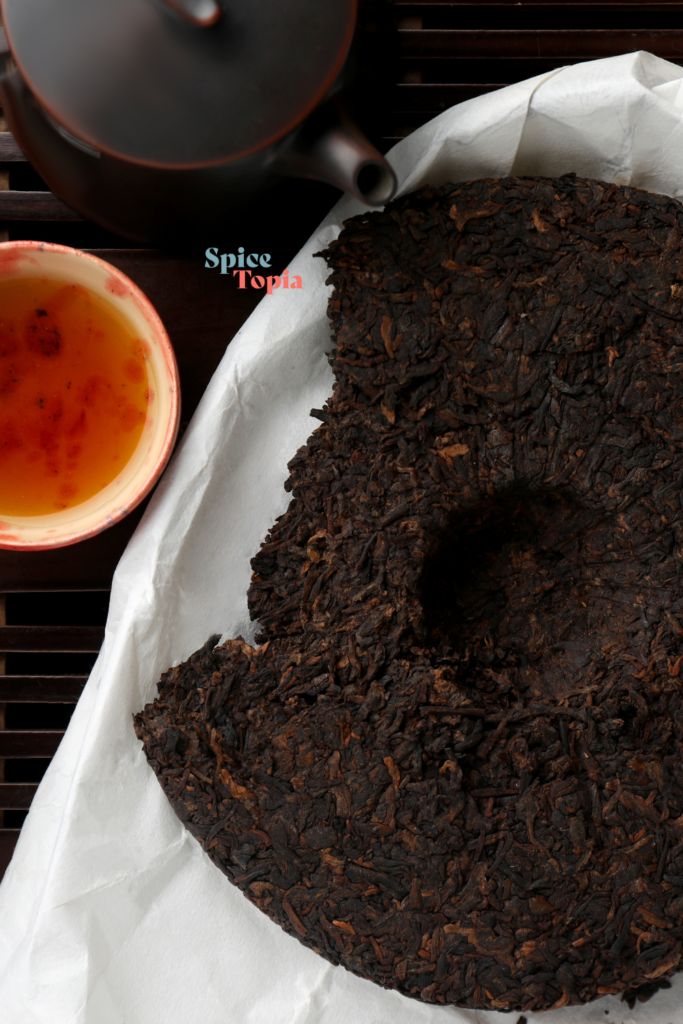
There are two major types of Pu-erh: raw and ripe. Both types of pu-erh meet the definition of pu-erh (location, variety of tea leaves, and sun dried), but vary on the fermentation processes.
Raw pu-erh is pu-erh that is naturally aged and produced. This tea is loose-leaf tea, cakes, or bricks made without any help outside what nature produces. It can be left to age in a natural environment for twenty, thirty years, or even longer.
And this long process answers the question, “Why is Pu-erh so expensive?”
Aged raw pu-erh is the most sought after by tea connoisseurs and collectors.
Ripe pu-erh offers an alternative to the expensive and pricey raw pu-erh. This variety is “cooked” in a process which introduces specific microbial activity. The tea is then aged in a damp, warm environment. This intensifies the fermentation process, allowing the pu-erh to “age” in a much quicker manner.
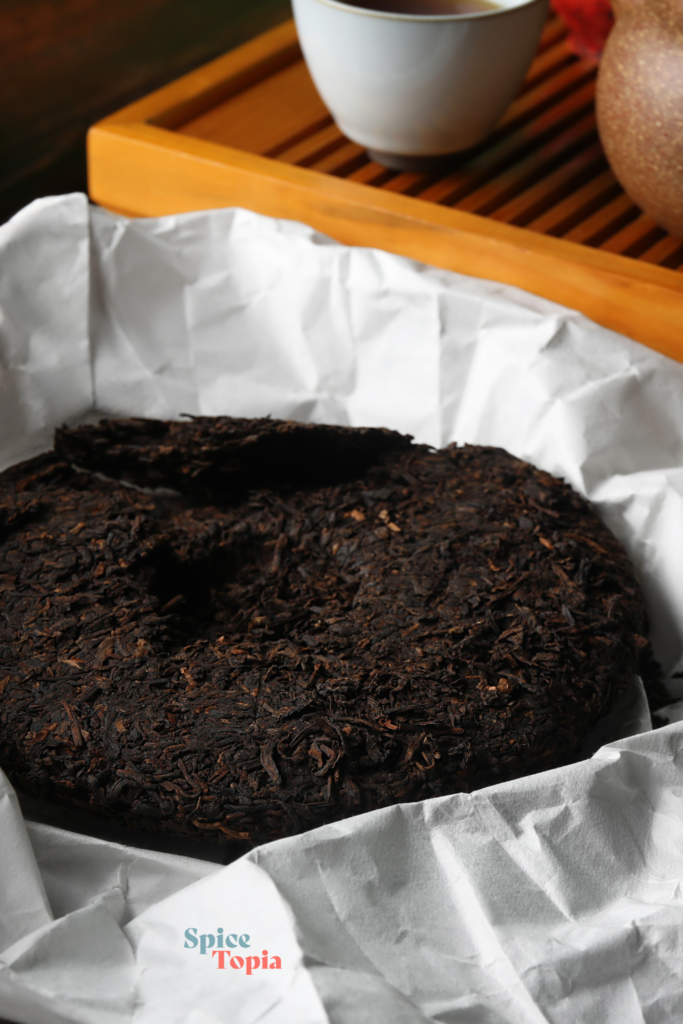
Think of the process of producing ripe pu-erh like the process of producing blue cheese.
Is it possible to produce a specific blue cheese by placing it in a cave and hoping it turns into blue cheese? Yes, sometimes that cheese will blue up exactly how you want it to. Other times, that process may take a long time or not happen at all.
So cheese makers inject their fresh cheeses with the exact mold that will produce a specific blue cheese and then places the cheese in a controlled environment.
Making ripe pu-erh follows the same procedure as making blue cheese. Specific microbes are added to the tea leaves before they are placed in a controlled environment.
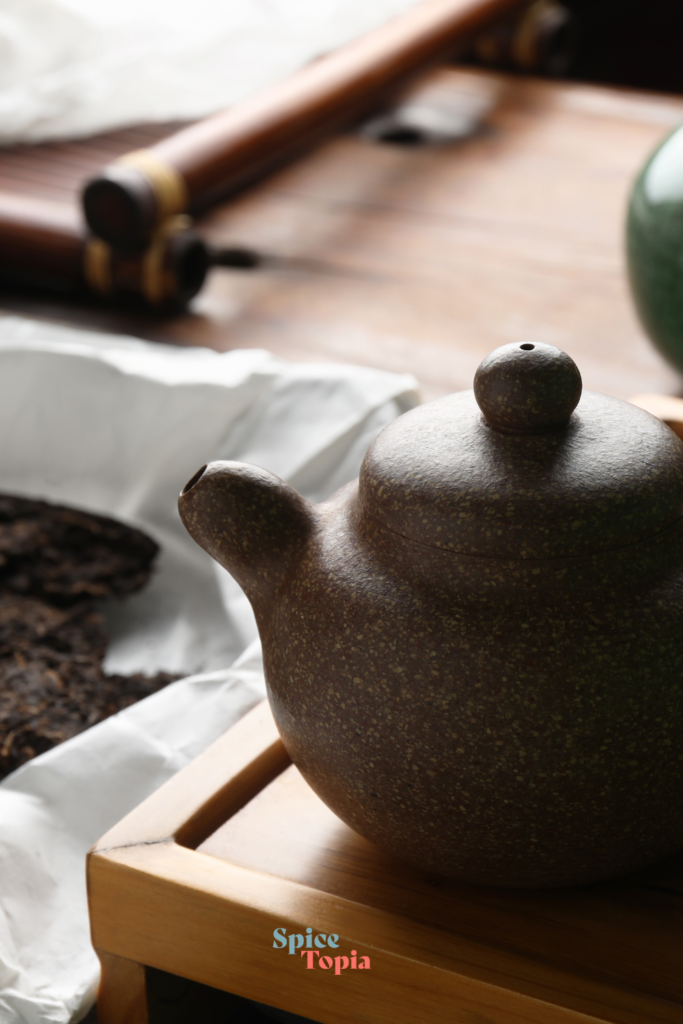
Oftentimes, ripe pu-erh is looked down upon by many tea snobs. They are looking for the “real” thing and do not consider this type of pu-erh real.
We consider ourselves tea snobs and 100% enjoy and appreciate ripe pu-erh.
Think of wine. On special occasions, it is nice to pop the cork on an expensive, really nice wine. But most times when enjoying a glass of wine, we’re looking for a tasty, relatively affordable drink.
Pu-erh is the same. In China, expensive aged raw pu-erhs are enjoyed for special occasions such as weddings. If one sits down to enjoy an everyday cup of tea, a more inexpensive ripe pu-erh can be delicious.
And like wine, you can find cheap pu-erh and inexpensive pu-erh! A three dollar bottle of wine is not going to have the care put into it as a fifteen dollar bottle of wine! The same can be said for pu-erh.
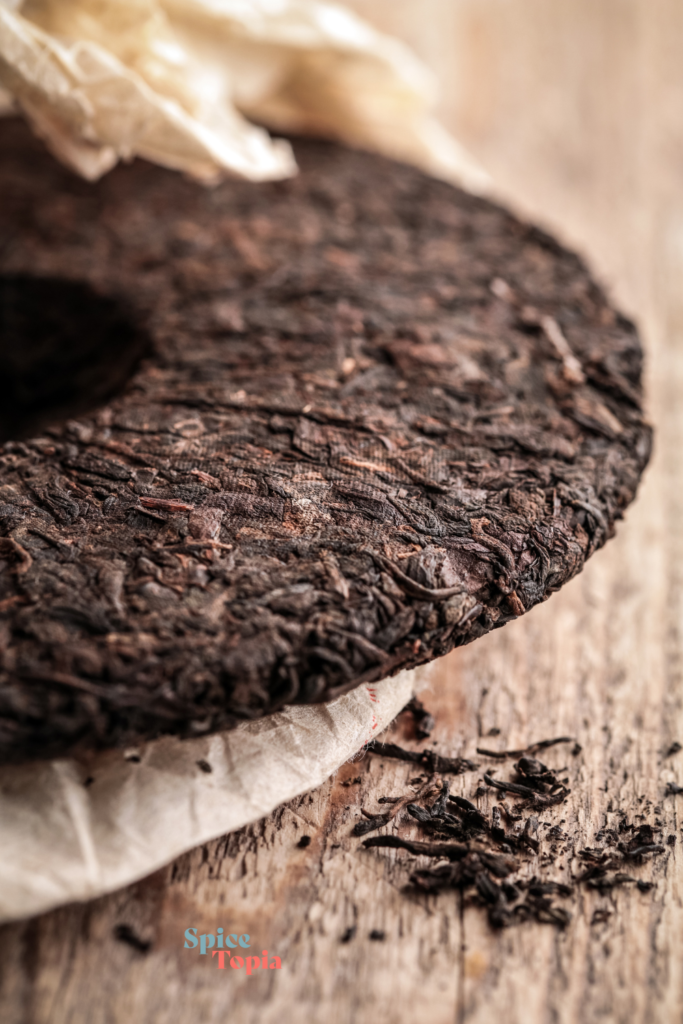
Before modern day packaging, fermented teas were formed into shapes, so one could determine their origin with just a glance. Teas came in mushrooms, logs, and melon shapes. These shapes were wrapped in different materials, such as woven bamboo strips or leaves.
Pu-erh distinguished itself with a disc shape wrapped in paper. This particular shape came about because pu-erh was a traveling tea!
Popular in Tibet, pu-erh needed an efficient way to be packed for long distance transportation. It was compressed into a disk shape, wrapped in paper, and then packed into a stack of seven discs (called a tung). This tung or stack was wrapped in bamboo shoot leaves before being packed onto horses and caravaned across China.
Today that compression is not needed, but the traditional pu-erh cake is still sought after and charming!
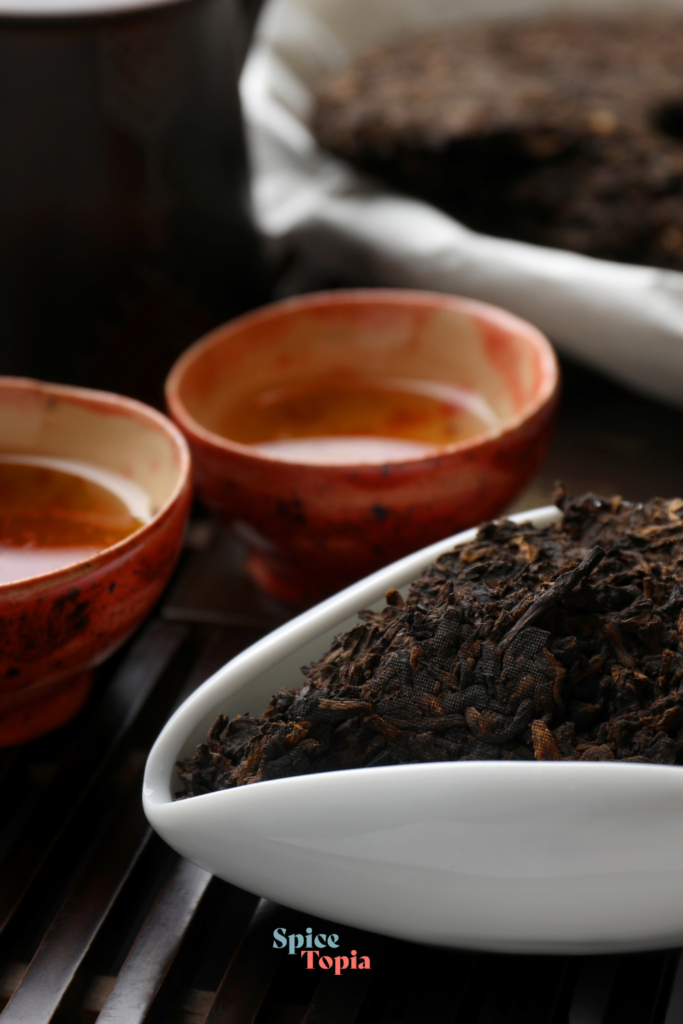
Whether fermented naturally or manually, studies have shown that the microbial activity in Pu-erh tea offers probiotic health benefits that no other teas offer.
Studies have shown that those probiotics may help improve blood sugar control, which in turn can help control hunger cues and be a tool in weight management.
Other studies show that pu-erh tea helps bind fats, preventing them from being absorbed into your bloodstream. This may positively affect cholesterol levels in your body.
More studies are needed to determine how this tea affects health long term.
If brewing western style, brew at 6–8 ounces of water heated to 190°F for 3 minutes.
If brewing gong-fu or eastern style in a gaiwan, heat the water to 160°F and steep for the following times.
1st steep: 30 seconds (we usually use this as a rinse and discard it)
2nd steep: 40 seconds
3rd steep: 40 seconds
4th steep: 60 seconds
5th steep: 90 seconds
6th steep: 120 seconds
With each steep, the character of the pu-erh subtly shifts in terms of strength and flavor.
And yes, you can reuse pu-erh tea! Steeping it multiple times allows for gradual changes in each pu-erh.
SpiceTopia offers many different pu-erh teas. You’ll find loose-leaf ripe pu-erh, mandarin formed pu-erhs (both ripe and raw), as well as our aged Number One Scholar for the serious tea connoisseur!
And if you are ready to dive deep into the world of Pu-erh, SpiceTopia’s Shèngdàn Jié Pu-erh Gift Box features a beautiful selection of raw and ripe pu-erh teas as well as a handcrafted gaiwan.
We have curated this Pu-erh Gift Basket to allow tea connoisseurs as well as tea novices to experience the diverse flavors of Pu-erh teas.
Filed with both ripe and raw pu’erhs, the teas included in this tea gift box have vintages from 2016 to 2021 and a range of flavors, textures, and aromas.
Tag @spicetopia on Instagram and Hastag it #spicetopia so we can see all your recipes.
Pin this recipe and share it with your followers.
Organic, Fair-Trade, Ethically Sourced, Created with Love Spices, Teas, and Locally Crafted Foods
Thank you for visiting our site!